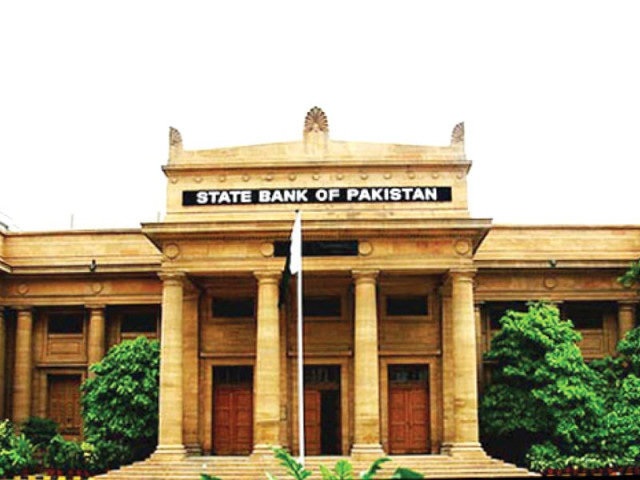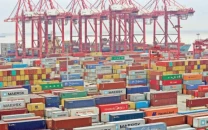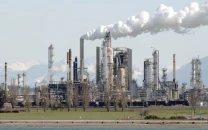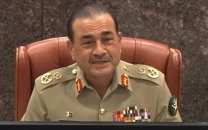Is it time for SBP to alleviate debt burden?
Economists divided on whether inflation stems from money printing or imports

Pakistan’s debt sustainability is once again a topic of discussion, resonating not just locally but also in global capital hubs. The consensus is clear: the level of loans poses a burden on citizens.
The ramifications of misgovernance, poor policymaking, and the myopic vision of first-class stakeholders directly impact the middle and lower classes disproportionately. In this context, coupled with a historically high 22% interest rate, the question arises: Is it time for the central bank to alleviate the debt burden on the exchequer?
Twenty-eight years ago, in 1996, interest rates touched 20%, while Pakistan’s population averages 21 years in age. Approximately 150 million people have never experienced an era with a 20% interest rate, yet they will bear the brunt of these missteps.
The economic manoeuvres of politicians, repeatedly tried and failed, have left the country devoid of strong purchasing power, quality education, decent job prospects, and hope for a financially comfortable old age. It’s no surprise that nearly half of Pakistan’s population contemplates migration in search of employment opportunities abroad.
Pakistan’s total tax collection is anticipated to be around Rs9 trillion, while the cost of “interest” alone is projected to be Rs8.5 trillion. The misery has two causes: the magnitude of the debt cannot be reduced overnight and requires deep structural reforms to cut expenditure and increase revenue.
However, the mark-up/interest on public debt needs to be viewed with a fresh perspective. Economists are divided on whether inflation in Pakistan is a result of excessive money printing or currency depreciation-induced imported inflation.
Read SBP gives Rs1.25tr to meet funding needs of banks
The extent to which a 22% interest rate can control inflation arising from increasing power, gas, and food prices is a separate debate. Imports are constrained to navigate through until exports grow and the economy streamlines state-owned enterprises (SOEs).
There is also reluctance to implement growth-inducing measures under the International Monetary Fund’s standby agreement, as strict discipline is mandated to manage limited US dollar reserves.
Without support from China, Saudi Arabia, and the UAE, Pakistan would face a much more challenging credit default scenario. Urgency at the highest forums, possibly the Special Investment Facilitation Council, is paramount to attract foreign investment in the short to medium term.
While headline CPI stands at 29%, the State Bank of Pakistan (SBP) has repeatedly highlighted that the “real interest rate” remains positive on a 12-month forward basis. Government borrowing costs have also reduced by nearly 4%, from the highest T-bill auction at 25% per year to a more reasonable 21%.
Read SBP report keeps GDP growth projection at 2-3%
In terms of the balance of payments, December witnessed a current account surplus of nearly $400 million, creating room for monetary easing, given that the current account deficit is expected to stay within budgeted numbers, although Eurobond inflows are unlikely.
Since April 2023, the Real Effective Exchange Rate has increased from 85 to 98, suggesting that the appreciation of the Pakistani rupee may need to pause to make exports more competitive and balance the books.
While there are examples of economies with weaker economic structures and interest rates below 20%, such as Egypt and Nigeria, there is also a worrisome precedent of financial instability with rates at 42% in Turkey.
The SBP’s monetary policy committee might follow the trend and cut interest rates by 1%, signalling that rates will only be cut when the situation is well under control. Alternatively, it may delay the decision until a new government is formed to receive credit for initiating monetary easing.
Whatever the approach, borrowers need relief, and the Pakistani government is eager for an interest rate cut, but only if it aligns with strict structural reforms. Short-term growth without reform would be detrimental.
With a 21% policy rate, it remains relatively high; it’s time to signal that the challenging days are behind us.
THE WRITER IS AN INDEPENDENT ECONOMIC ANALYST
Published in The Express Tribune, January 22nd, 2024.
Like Business on Facebook, follow @TribuneBiz on Twitter to stay informed and join in the conversation.



















COMMENTS
Comments are moderated and generally will be posted if they are on-topic and not abusive.
For more information, please see our Comments FAQ